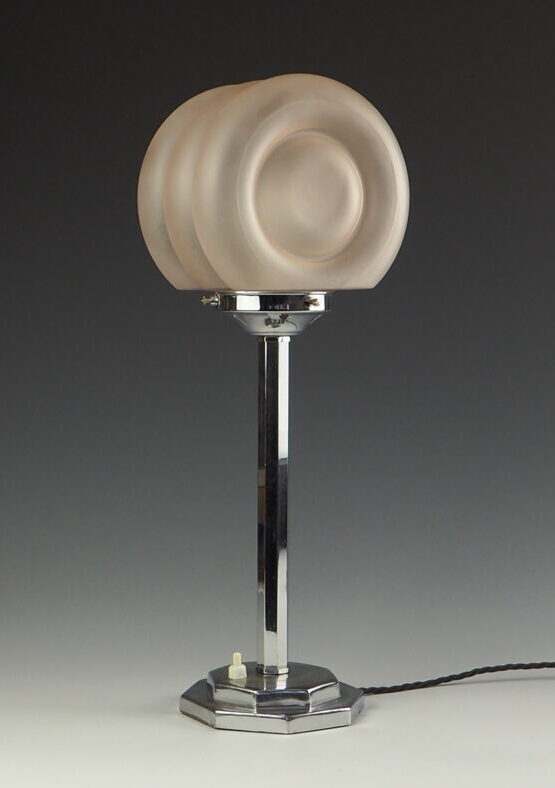While these three styles share a common prefix of ‘art,’ each possesses a distinct visual identity. In this article, we unravel the differences between Art Deco, Art Nouveau, and the Arts and Crafts style once and for all.
Our journey begins with the emergence of Art Deco, the youngest of the trio, and takes us on a historical voyage, tracing the roots of each style. By the end, you’ll possess the knowledge to confidently decipher the unique characteristics and aesthetics that define Art Deco, Art Nouveau, and the Arts and Crafts style.
Art Deco
Art Deco rose to prominence in the 1920s, celebrating the remarkable achievements of the 20th century, including the advent of electricity, radio, skyscrapers, and the groundbreaking Cubist art movement.
Art Deco derived its name, a shortened form of “arts décoratifs,” from the Exposition Internationale des Arts Décoratifs et Industriels Modernes held in Paris in 1925. However, the diverse styles that defined Art Deco had already emerged in Paris and Brussels before World War I.
With its strong geometric focus, sharp angles, and distinctive zigzag style, Art Deco stands apart from other design styles. Mirrors, black lacquer work, highly polished metals and ivory are notable hallmarks of this elegant and opulent style.
By the 1930s and after the Great Depression, a noticeable shift occurred as Art Deco began to soften its hard, sharp edges, adopting a soft and subdued style. One of the most remarkable showcases of this evolution can be observed in the famed Chrysler Building in New York, where Art Deco embraced a more graceful and streamlined aesthetic while still retaining its essence of luxury and glamour. Other notable examples of Art Deco can be found in iconic films such as ‘The Great Gatsby,’ ‘Metropolis,’ ‘Cabaret,’ and ‘Chicago.’.
Art Nouveau
Tracing back in time to the late 19th century, and very popular between 1890 and 1910 during the Belle Époque period, we encounter the prevailing style known as Art Nouveau. This captivating style goes by various names in different languages: Jugendstil in German, Stile Liberty in Italian, Modernisme in Catalan, and it is also recognised as the Modern Style in English.
A primary goal of Art Nouveau was to break down the conventional boundaries between traditional fine arts, such as painting and sculpture and applied arts. Art Nouveau stands out distinctively from Art Deco due to its captivating “whiplash” curves and intricate designs inspired by nature, showcasing motifs such as insect wings, flowers, feathers, and vines.
With the onset of the First World War in 1914, Art Nouveau had largely reached its culmination and waned in popularity, leaving “the stage” for its successor, Art Deco.
Arts and Crafts
Emerging in the mid-19th century in Britain as a response to industrialisation, the Arts and Crafts style is the oldest among the three. The Arts and Crafts movement emerged as a response to the perceived decline in standards attributed to the rise of machinery and mass production. Reformers voiced their concerns, further fueled by their observations at the Great Exhibition of 1851. They found the exhibited items to be excessively ornate, artificial, and lacking an appreciation for the inherent qualities of the materials employed. This dissatisfaction propelled the movement’s desire for a return to craftsmanship and authenticity.
Being the predecessor of Art Nouveau, The Arts and Crafts style drew significant inspiration from nature, albeit with a more rectilinear approach, as opposed to the pronounced curves of Art Nouveau. Wood played a prominent role, often showcased in its natural finish. Handcrafted decorative elements adorned the creations, spanning from intricately designed tiles and vases to mesmerizing stained glass pieces.
In Conclusion
Whether you find yourself drawn to the bold lines of Art Deco, the delicate flourishes of Art Nouveau, or the timeless charm of Arts and Crafts, each style holds a timeless allure that continues to inspire and captivate art enthusiasts and collectors alike.
Visit latest stock for more one-of-a-kind antique pieces and treasures, meticulously curated to capture the essence of these iconic eras.






